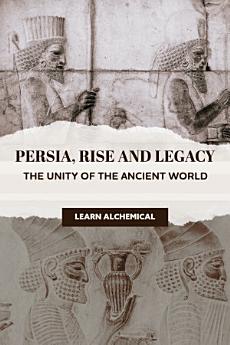Persia, Rise and Legacy: The Unity of the Ancient World
Learn Alchemical
Aug 2025 · LEARN ALCHEMICAL
Ebook
340
Pages
family_home
Eligible
info
reportRatings and reviews aren’t verified Learn More
About this ebook
The story of Persia is not born in isolation. It emerges—like a shard of pottery found layered deep beneath more familiar ruins—from a broader, older, and more entangled world. Long before the name "Persia" echoed in the courts of Babylon, the valleys of the Zagros Mountains and the plains of Khuzistan pulsed with the rhythms of older civilizations: Elamites, Assyrians, Babylonians, and Medes. To truly understand the rise of Persia is to first understand the world that surrounded it—and in many ways, made it possible. The earliest glimpses of the people we now call "Persians" appear not in their own voices, but in the accounts of others. The first written records mentioning the Persians date to the ninth century BCE, when Assyrian King Shalmaneser III waged campaigns through the rugged lands of the central Zagros. These Assyrian records describe a region populated by Iranian-speaking peoples—scattered, semi-nomadic, loosely federated—who offered tribute or, more often, resistance to Assyrian expansion. The term "Parsua," applied by the Assyrians to one such area, gives us the first linguistic seed of what would later blossom into "Parsa" or Persia. But the voice of the Persians themselves, their inner world, remains mute in this early era.
About the author
Odyssey of Empires, navigating through Ancient Civilizations with Archaeologists, Historians and Passionate insight and information.
Rate this ebook
Tell us what you think.
Reading information
Smartphones and tablets
Install the Google Play Books app for Android and iPad/iPhone. It syncs automatically with your account and allows you to read online or offline wherever you are.
Laptops and computers
You can listen to audiobooks purchased on Google Play using your computer's web browser.
eReaders and other devices
To read on e-ink devices like Kobo eReaders, you'll need to download a file and transfer it to your device. Follow the detailed Help Center instructions to transfer the files to supported eReaders.






